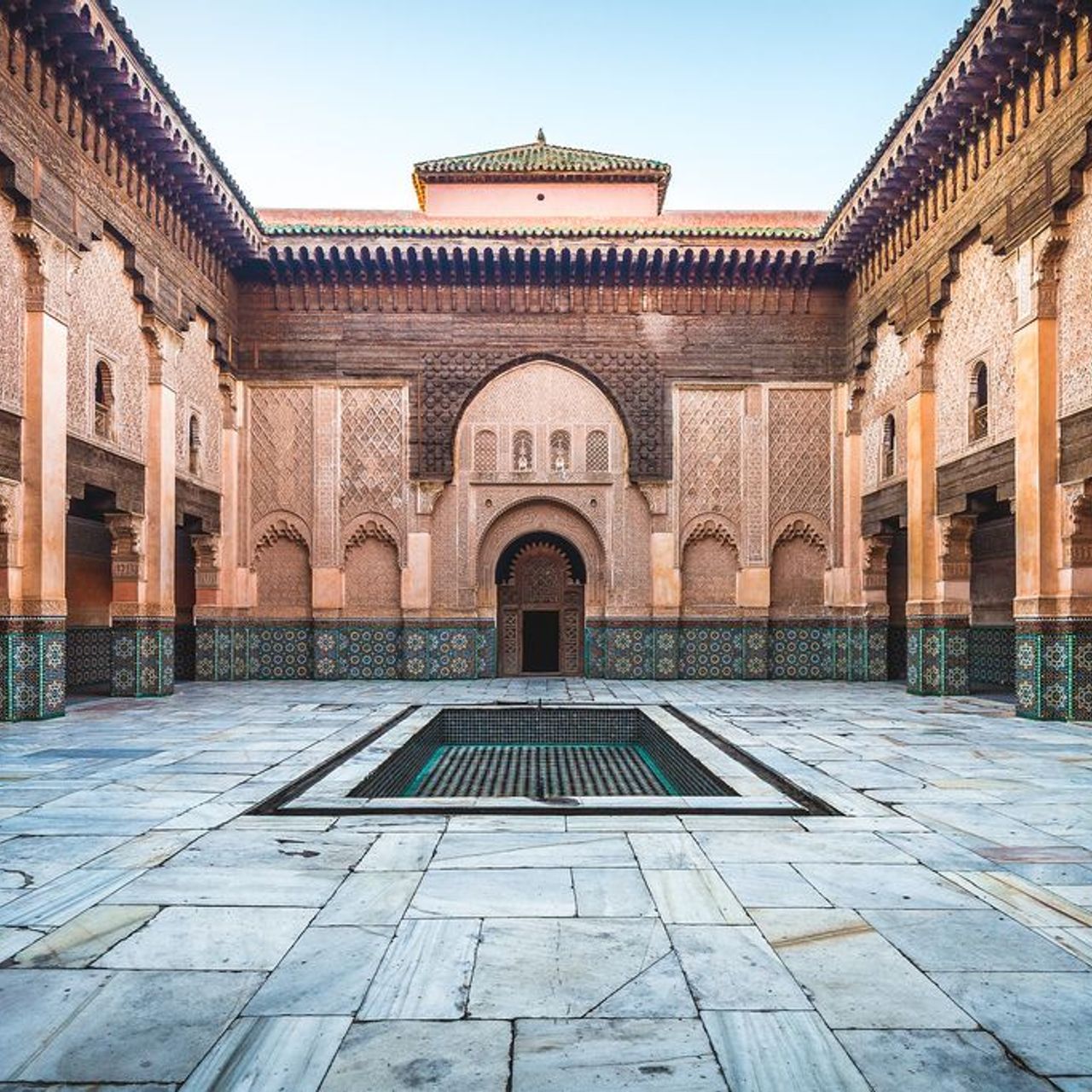Amidst historic immensity...
To the east of the mosque named after it, around which the city center was built, lies the Madrasa. Upon entering, a serene atmosphere prevails. Before us, a large marble basin is set in the heart of the elongated central courtyard. Around this courtyard, tall walls adorned with various calligraphies and mosaics envelop us. The vastness of the building does not detract from its splendor. We look up, in awe of this impressive site. Ben Youssef Madrasa was the largest Quranic university of its time and hosted students from around the world for over four centuries. Over a hundred rooms were also set up on the upper floors to accommodate them in this building that spans more than 1500 square meters. These rooms are visitable, and small explanatory notes on the walls help us discover the life of students from the past. For instance, a comparison is made between a student's room from the countryside and that of a city dweller. Indeed, the Madrasa welcomed students from all backgrounds, united by their thirst for knowledge. They exchanged ideas, mingled, and shared in the great central courtyard or in the prayer room.
And aesthetic splendor
The Madrasa is built with typical Islamic architectural materials: stucco, marble, mosaic, and cedar wood were used in the construction of the building. The marble was imported from Carrara in Italy, and the cedar wood, which comes from the Atlas Mountains, was used for the domes and ceilings of the place. Its unique beauty also stems from the geometric patterns embedded into the walls, from floor to ceiling, and the traditional mosaics found on many city monuments. The basin, endowed with two bronze water jets, represents the heart of this unique space. On the sides of the courtyard, two corridors supported by large columns lead to the interior of the building. Upstairs, a real labyrinth unfolds before our eyes. Certain spacious rooms offer a magnificent view of the central patio. The entire site, restored 60 years ago, has lost none of its time-honored beauty. The diversity of its materials, decor, and space organization offer visitors a remarkable spectacle.
The Quranic school is still one of the most recognized in all of the Maghreb today. As a fruit of a unique history and representative of Moroccan art from its era, it is a rare gem amid the old town. In this place, hours pass unnoticed, and one feels, even if just for a moment, like a student of the day.
